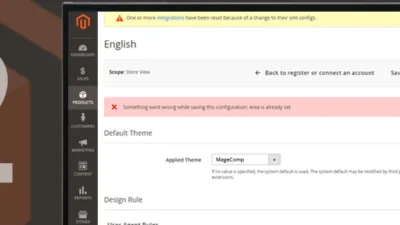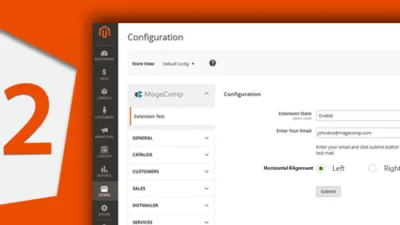The Magento extension is made up of several files that work together to serve a purpose for it made. This extension either overrides default Magento files or works separately to enhance default Magento functionality by extending the native code.
Every time, when we install the extension inside Magento store, it requires some of the user input before installation and saves to file instead of a database. These files are generally known as a dynamic file which contains dynamic or you can say changeable values instead of any static value. Recently while creating an extension we came across the same requirements.
We need to create one file for our requirement of creating a dynamic file using InstallData class inside our Module using below code.
app\code\Vendor\Extension\Setup\InstallData.php
<?php
namespace Vendor\Extension\Setup;
use Magento\Eav\Model\Config;
use Magento\Framework\App\Cache\TypeListInterface;
use Magento\Framework\App\Config\ScopeConfigInterface;
use Magento\Framework\App\Config\Storage\WriterInterface;
use Magento\Framework\App\Filesystem\DirectoryList;
use Magento\Framework\Setup\InstallDataInterface;
use Magento\Framework\Setup\ModuleDataSetupInterface;
use Magento\Framework\Setup\ModuleContextInterface;
use Magento\Framework\Module\Dir;
class InstallData implements InstallDataInterface
{
const XML_PATH_CUSTOMER_FILENAME = 'customer/privacy/cipher_filename';
protected $scopeConfig;
protected $configWriter;
protected $directoryList;
protected $cacheTypeList;
protected $eavConfig;
public function __construct
(
ScopeConfigInterface $scopeConfig,
WriterInterface $configWriter,
TypeListInterface $cacheTypeList,
DirectoryList $directoryList,
Config $eavConfig,
Reader $moduleReader
)
{
$this->scopeConfig = $scopeConfig;
$this->configWriter = $configWriter;
$this->cacheTypeList = $cacheTypeList;
$this->directoryList = $directoryList;
$this->eavConfig = $eavConfig;
}
public function install( ModuleDataSetupInterface $setup, ModuleContextInterface $context )
{
$setup->startSetup();
$dir = $this->getDatabaseDirectory();
if (!is_dir($dir)) {
mkdir($dir, 0700, true);
}
$fileName = $this->scopeConfig->getValue(self::XML_PATH_CUSTOMER_FILENAME);
if (strlen($fileName) == 0) {
$fileName = md5(microtime(true) . rand(0, 10000));
$this->configWriter->save(self::XML_PATH_CUSTOMER_FILENAME, $fileName);
$this->cacheTypeList->cleanType('config');
}
$file = $dir . '/' . $fileName . '.php';
if (!is_file($file)) {
file_put_contents($file, 'Hello Vendor');
chmod($file, 0700);
}
$setup->endSetup();
}
public function getDatabaseDirectory()
{
$viewDir = $this->moduleReader->getModuleDir(
\Magento\Framework\Module\Dir::MODULE_VIEW_DIR,
'Vendor_Extension'
);
return $viewDir . '/frontend/web';
}
}Also, you can play manipulate with these codes according to your need of creating dynamic file while creating an extension.
Lastly, hit that stars if this code works for you and comment down below if you face any issue while using this code. Happy Coding!








